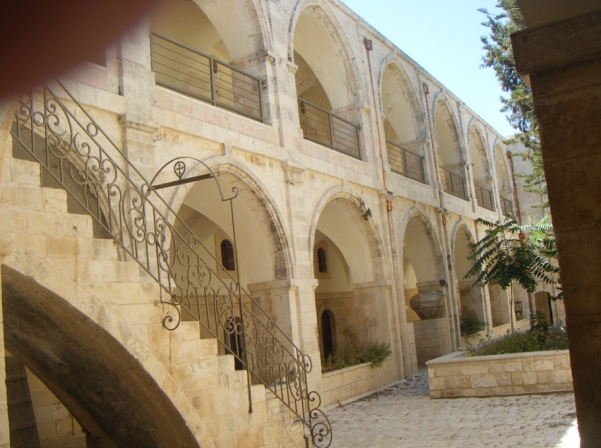Reopening of Armenian Museum in Jerusalem is a possibility
- (0)

(Mediamax) – Regardless of nationality, tourists arriving in Jerusalem don’t miss the Armenian Quarter. It’s one of four neighborhoods of the Old City; the other three are the Christian, Jewish and Muslim. Centuries-old history of residence and huge cultural heritage of Armenians in the Holy City has plenty of evidence. However, what the visitors can see is just the tip of the iceberg.
The Edward and Helen Mardigian Museum of Armenian Art and History in Armenian Patriarchate of Jerusalem has been closed for over 20 years. Renowned Armenian-French expert of Armenian studies, historian, mathematician Claude Mutafian visited the museum in 1979 and can still recall the terrible state of the building.
About two years ago Armenian Patriarch of Jerusalem, Archbishop Nourhan Manougian offered Claude Mutafian to take on the restoration of the museum. The expert began preparing the draft exhibition plan together with Armenian-French expert of Armenian studies Harutyun Kevorkian and museum expert Harut Pezchyan.
AUA Digital Library of Classical Armenian Literature invited Claude Mutafian to present the draft.
The scientist believes that Jerusalem is the largest and most valuable treasury of Armenian science after Armenia herself. Unfortunately, the huge collection of materials is not available to visitors.
“Many tourists come to Jerusalem, and their trip brochures mention the Armenian Quarter. They find it, but the Mother See is open for visitors only between 15:00 and 15:30. The tourists then follow the sign pointing at the Armenian Museum. They go there and it’s closed. My heart aches to see that people come with enthusiasm and can’t access anything. If someone wants to learn and grow, you should help them. The monks resist quite fiercely. It’s a strange mentality: this is ours and we should guard it or the strangers will see it and feel jealous,” said Claude Mutafian.
The two-storey, 700m2 building must be renovated and accommodated for regular exhibitions. According to the preliminary project, the museum will have several sections that will display Armenian heritage in the Holy City, Cathedral of Saint James with its benefactors and pilgrims, the Armenian Genocide and its consequences, as well as materials and photographs about book printing. The first book printed in Jerusalem was in Armenian and the printing press is kept in the Armenian Patriarchate.
Claude Mutafian said that valuable exhibits are plenty. Fortunately, they are in good condition and don’t need restoration.
 Photo: From Claude Mutafian’s archive
Photo: From Claude Mutafian’s archive
“There are seven miniatures of Toros Roslin in the world, and 4 of them are in Jerusalem. The Armenian Patriarchate keeps a rich Gospel, Catholic and Patriarchal kondaks (pastorals) of 1064, the Covenants of Prophet Muhammad, and the order of Salah ad-Din that instructs not to harm Armenians after he conquers the city. There’s also a very beautiful, 14th century wooden church door with carved writings. I saw only four such doors in the world: two in Hermitage, one in Armenia’s History Museum, and the fourth in Feodosia. The fifth one is in Jerusalem.”
Some valuable exhibits will be displayed in regular exhibitions. The museum will make copies of the exhibits that require special conditions for storage. Visitors will be able to see the originals on certain days. The project authors plan to copy a 7th century mosaic with Armenian writings, located outside of the Old City, and display it at the museum entrance.
 Photo: From Claude Mutafian’s archive
Photo: From Claude Mutafian’s archive
Reopening of the museum requires around EUR 2m. Claude Mutafian remarked that Patriarch Manougian promised to get the necessary sum. The ideas are abundant and will be discussed over for many times before the project enters the implementation stage.


















